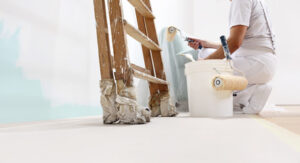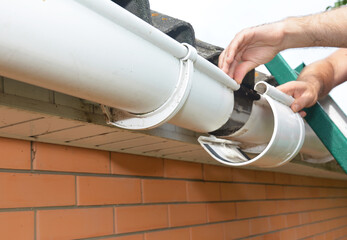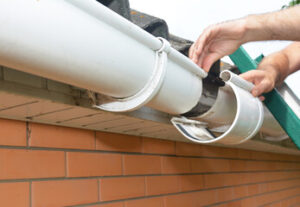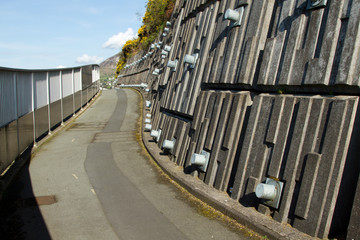Studies show that a quality exterior paint job adds value to your home. Professional painters will help you choose an attractive color scheme that will make your home stand out from the neighborhood.

They will also inspect and repair other issues such as mold, mildew, rotting wood, water stains, etc. Then, they will properly prep the surface and apply a fresh coat of paint that will last. Visit https://www.mandjpaintingohio.com/ for professional help.
A fresh coat of exterior paint can drastically improve your home’s curb appeal, adding to its overall value. But if you lack the right equipment or aren’t comfortable working at heights, it may be best to leave this task to a professional. These painting experts have the necessary tools to complete the job quickly and efficiently, leaving you with a beautiful new look that will last for years.
Professional painters also know how to prepare various surfaces and can choose the best type of paint for each job. They also understand the importance of properly applying each coat for a long-lasting finish. They use top-tier products, which are designed to resist stains and dirt, and they can help you select colors that complement your architectural style and neighborhood.
In addition to the standard paints, brushes and rollers, painting professionals have a variety of specialized equipment for hard-to-reach spaces. They can use ladders that are adjustable or nonadjustable, and they can set up scaffolding to reach high places. Most importantly, these pros know how to work safely when using these pieces of equipment.
Other important pieces of painting equipment include drop cloths and paint buckets. They can cover the ground to keep it clean and prevent paint spills, as well as protect windows and doorknobs from drips. They can even keep a roller moist and prevent it from drying out between applications.
Paint sprayers are another piece of essential painting equipment. These machines can apply paint 10 times faster than brushing and four times faster than rolling, and they offer a smoother application. They can also be used to create a uniform color on difficult-to-reach areas such as ceilings and second-floor exteriors.
Other equipment that painters often have includes primer, which is a resin-based material that helps seal the surface before you begin painting. It’s especially important for outdoor projects, as it protects the underlying material and ensures that your paint job will last longer. A primer is typically recommended for oil-based paints, but some painters prefer to use it on all types of exteriors.
Experience
A fresh coat of paint on a home’s exterior is one of the most cost-effective ways to give it a facelift and boost curb appeal. However, it’s not something that most homeowners can easily do on their own. Hiring professional painters can ensure that the project is completed correctly and within the scheduled timeframe. This is important because it can help to minimize the inconvenience that is caused by a painting project and it can also ensure that the finished product is of high quality.
A reputable paint contractor will have a proven track record of successful projects. Asking to see photos of previous jobs that are similar to what you need will allow you to get a better idea of their level of experience. You can also ask about their process and what kind of guarantees or warranties they offer. Almost all residential and commercial painting contractors provide labor-only warranties, which last between one and two years.
In addition to having the right equipment, a professional painting company will have the expertise and knowledge to make sure that your project is done correctly. They can help you select the best colors, paint quality and finish, as well as advise you on the proper cleaning and preparation methods to use. They can also save you a lot of time by getting the job done quickly and efficiently.
If you are a handy homeowner, you might be able to save some money by doing the work yourself. But it’s important to remember that the amount of time you spend on this project will likely be more than what you would save. Moreover, there are other costs involved such as buying or renting equipment, painting supplies and labor costs. These costs can add up and end up being more expensive than hiring a professional painter to do the job.
Besides being skilled and trained, professional painters are insured. This means that they have workers’ compensation and liability insurance that covers them for any accidental damages or injuries that may occur while they are working at your property. On the other hand, if you injure yourself while trying to paint your house’s exterior yourself, you might be left with significant medical bills that you could end up paying for the rest of your life.
Safety
Painting is a fun and rewarding profession but it can also be dangerous if proper safety procedures are not followed. This is especially true for exterior painters who have to deal with ladders, scaffolding, power tools, and chemicals on a daily basis. The good news is that a few simple precautions can keep employees safe and protect the reputation of your company.
Ladders are one of the biggest hazards in painting projects. Ensure that ladders are inspected regularly and have non-slip feet and locking devices to prevent accidents and falls. When choosing ladders, opt for models that meet OSHA standards and have extension handles to allow painters to reach high spots without having to climb on furniture or other items.
Chemicals and solvents such as paint stripper, white spirit, and varnish pose a danger to painters and anyone else who may come into contact with them. These hazardous substances are flammable and need to be stored carefully away from heat sources and in a secure area.
Ventilation is another important issue for painters. Working in confined spaces can create a buildup of fumes that can be toxic to breathing, so it is important to open windows as wide as possible and use fans to push air out of the room.
It is also important to keep painters hydrated and protected from the sun. Exposure to the sun causes short-term effects such as reddening of the skin, but long-term exposure can lead to skin cancer. It is therefore essential for painters to wear a high-factor sunscreen and cover any exposed areas of the body with clothing or hats.
When hiring a professional painting contractor, make sure they are able to provide you with references from previous clients. This will give you an idea of the quality of their work and if their customers were happy with the outcome. It is also a good idea to get several estimates from different contractors and choose the one that offers competitive prices. However, don’t choose a contractor solely on the basis of their low costs, as this can indicate that they are inexperienced or do not have the proper insurance policies to cover accidents.
Time
It takes time to properly prep surfaces for painting, apply a coat of paint and let it dry. For this reason, you should only trust your home’s exterior to professional painters. They are able to work efficiently and consistently, which helps ensure a high-quality finish that will stand the test of time.
Regularly painting the outside of your house can also help protect it from damage and decay. During the painting process, a professional will be able to spot potential problems that might not otherwise be visible, such as mildew or mold growth. They can then take steps to repair these issues, which will extend the life of your paint job and improve your home’s curb appeal and value.
Weather and climate conditions can have a significant impact on the outcome of your paint job, including how quickly it dries and the adherence of the coat. For this reason, it is best to paint your house exterior in the fall or spring, when temperatures are moderate and humidity levels are low.
Aside from the weather, it’s also important to choose a time of year that will allow you to complete the project without disruption. Many homeowners try to save money by doing their own painting jobs, but this is a project that’s better left to the professionals. Professionals have the tools, equipment and experience to give you a beautiful paint job that will last for years to come.
In addition to choosing the right paint and color, it’s important to select the correct time of year for your home’s exterior painting. Depending on your location, late spring and early fall are usually the best choices for exterior painting. This is because these seasons tend to be less extreme and will provide the most ideal weather conditions for painting.
Painting the exterior of your home is a big job and requires careful preparation and attention to detail. It’s not something you should attempt on your own, especially if you have an older home with multiple stories or a complex layout. It is also best to leave the high-level work to a professional who can safely and effectively access difficult-to-reach areas with a ladder.



















